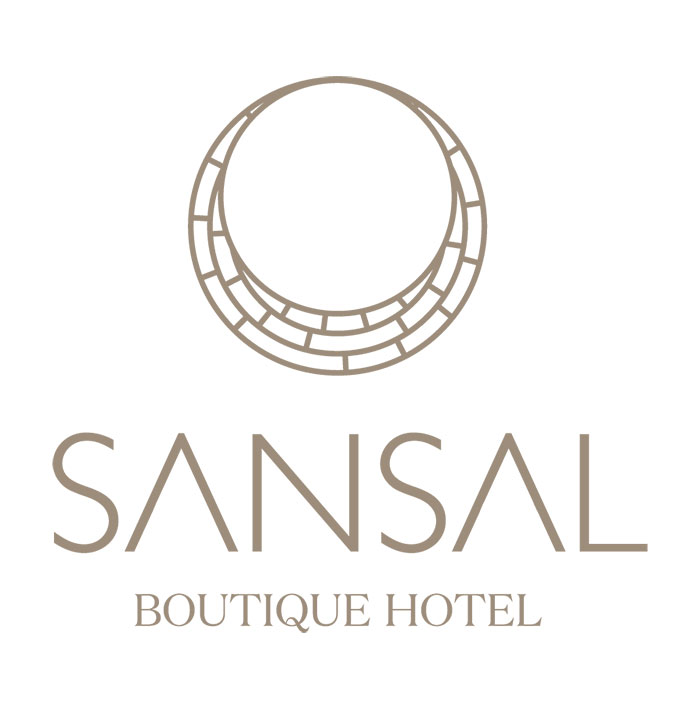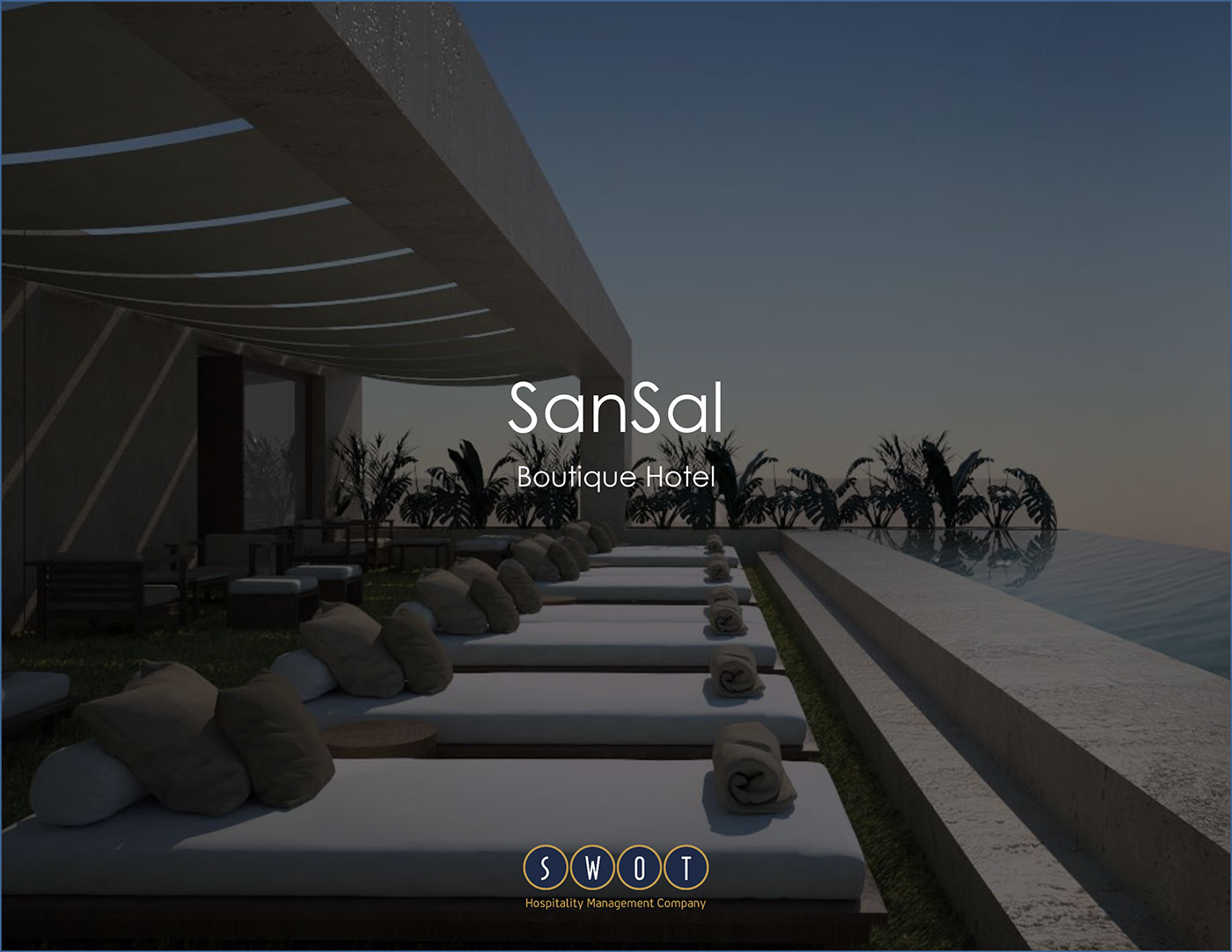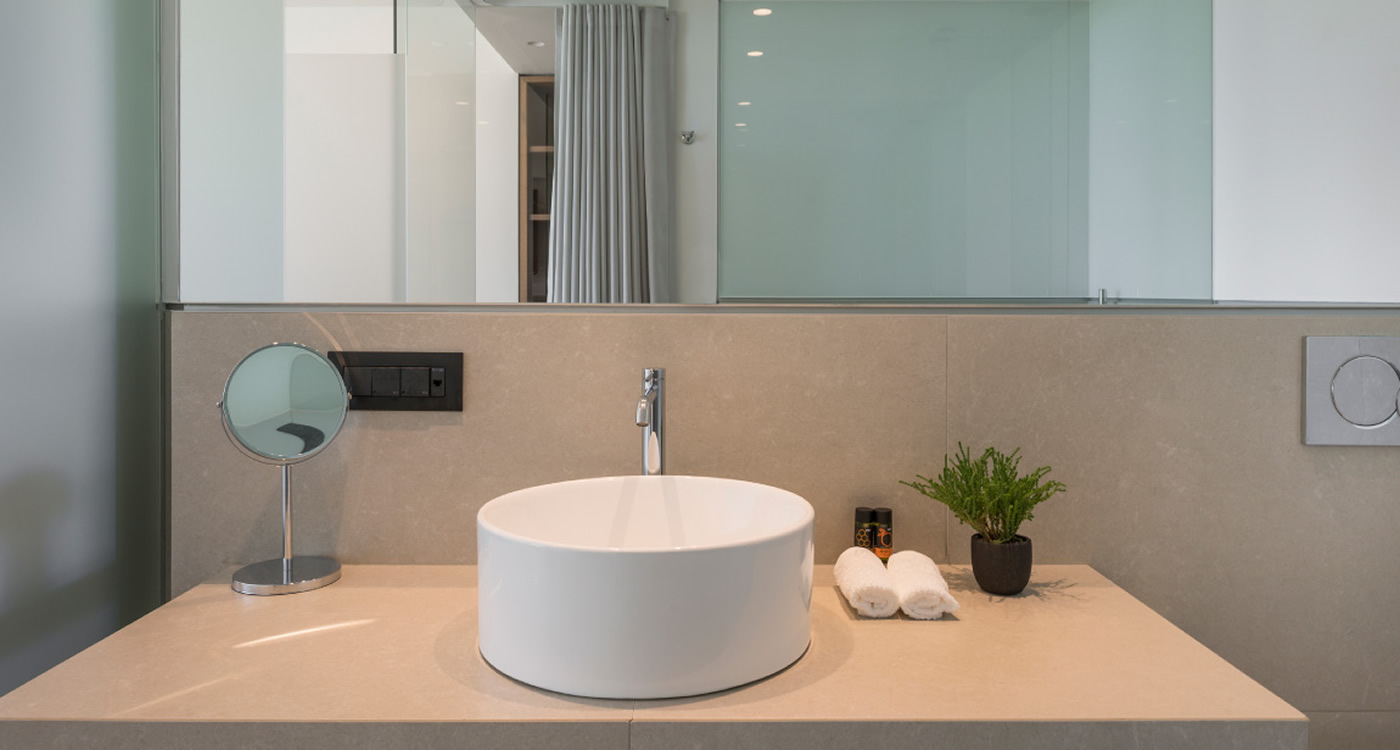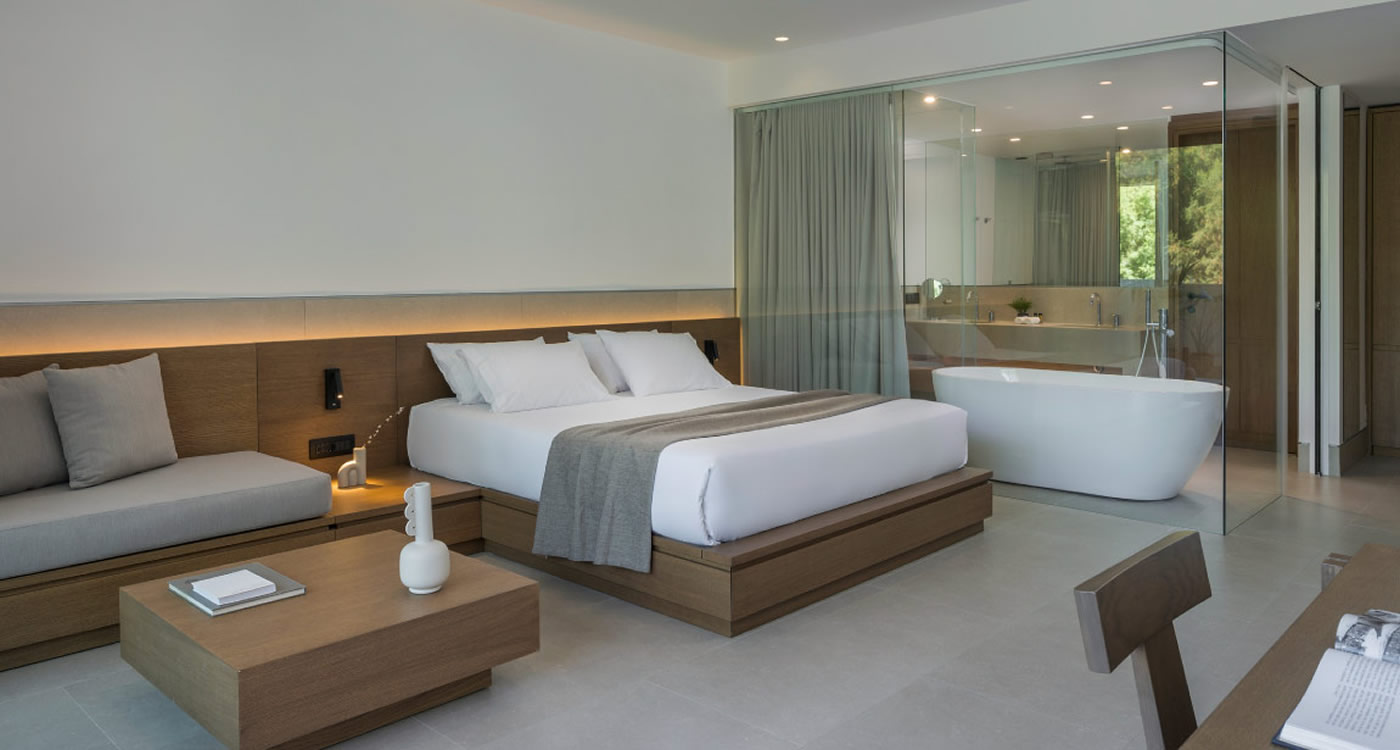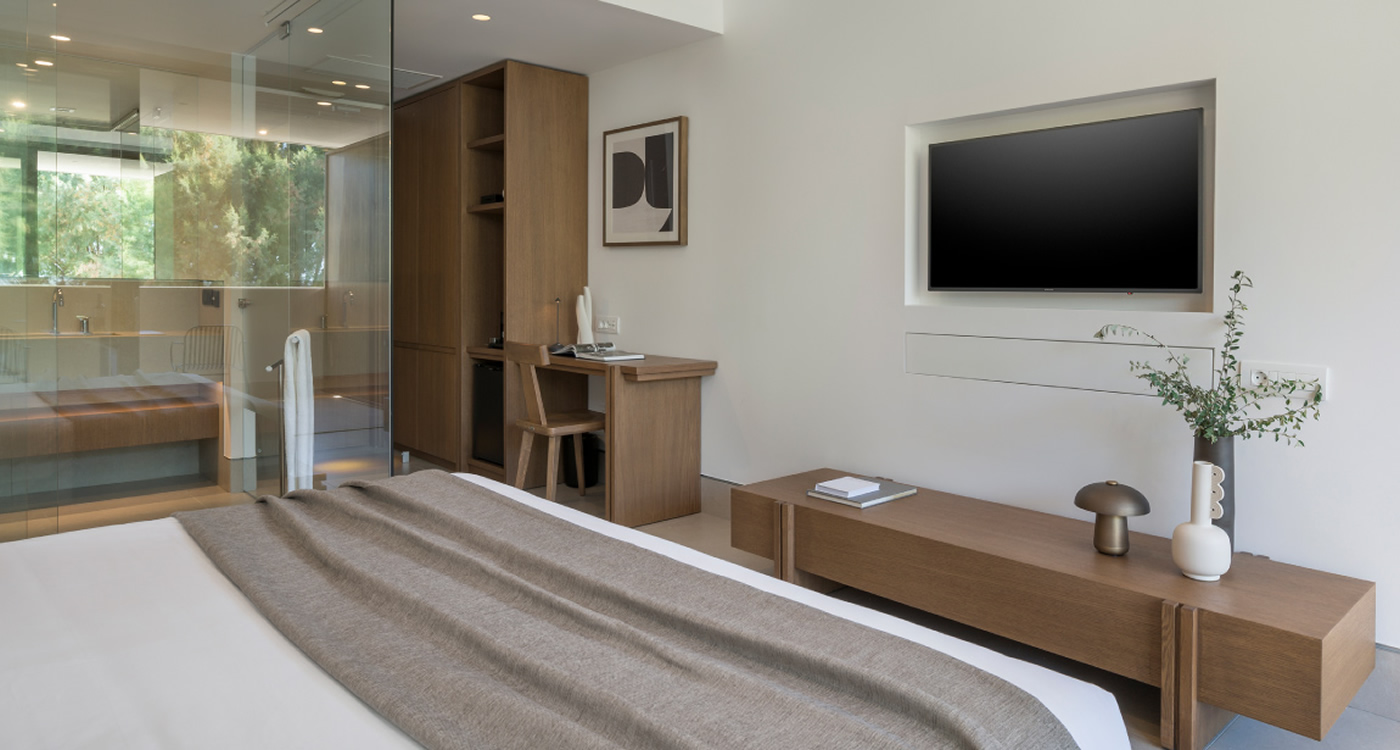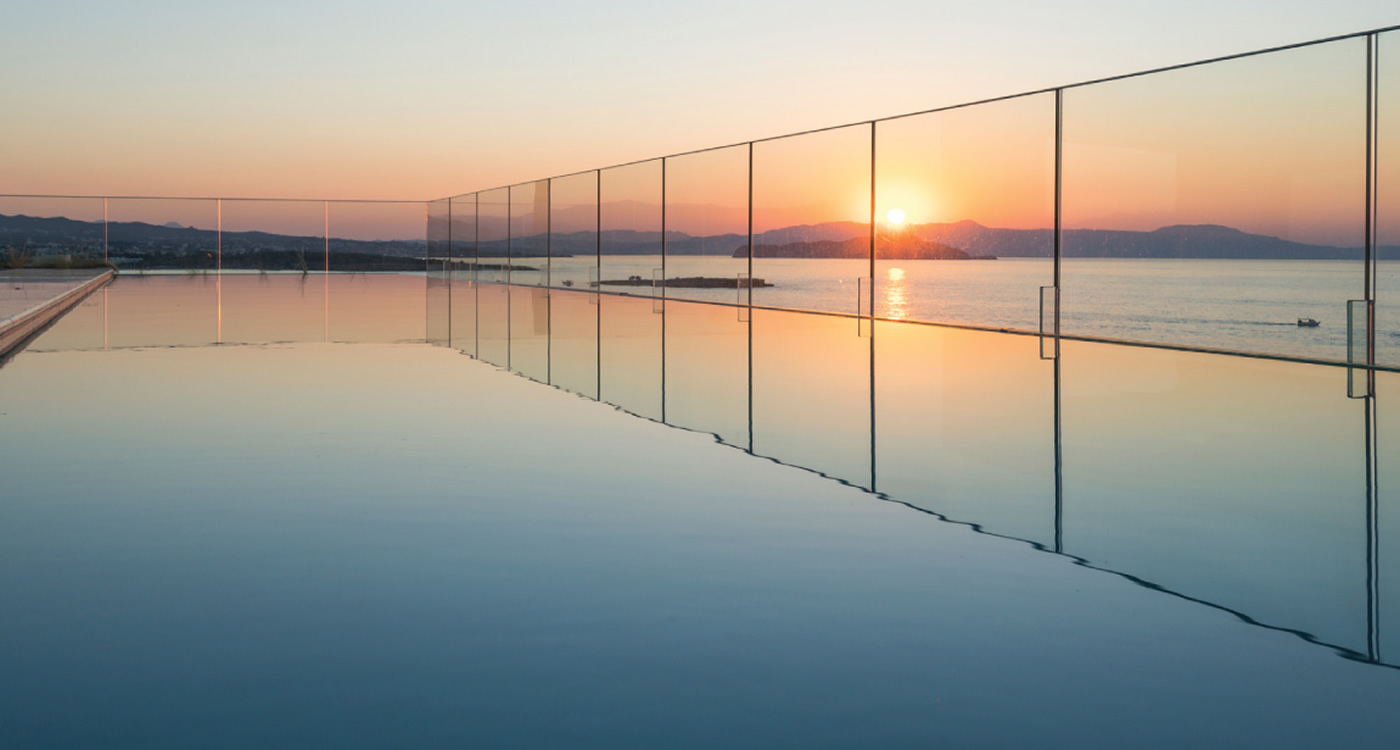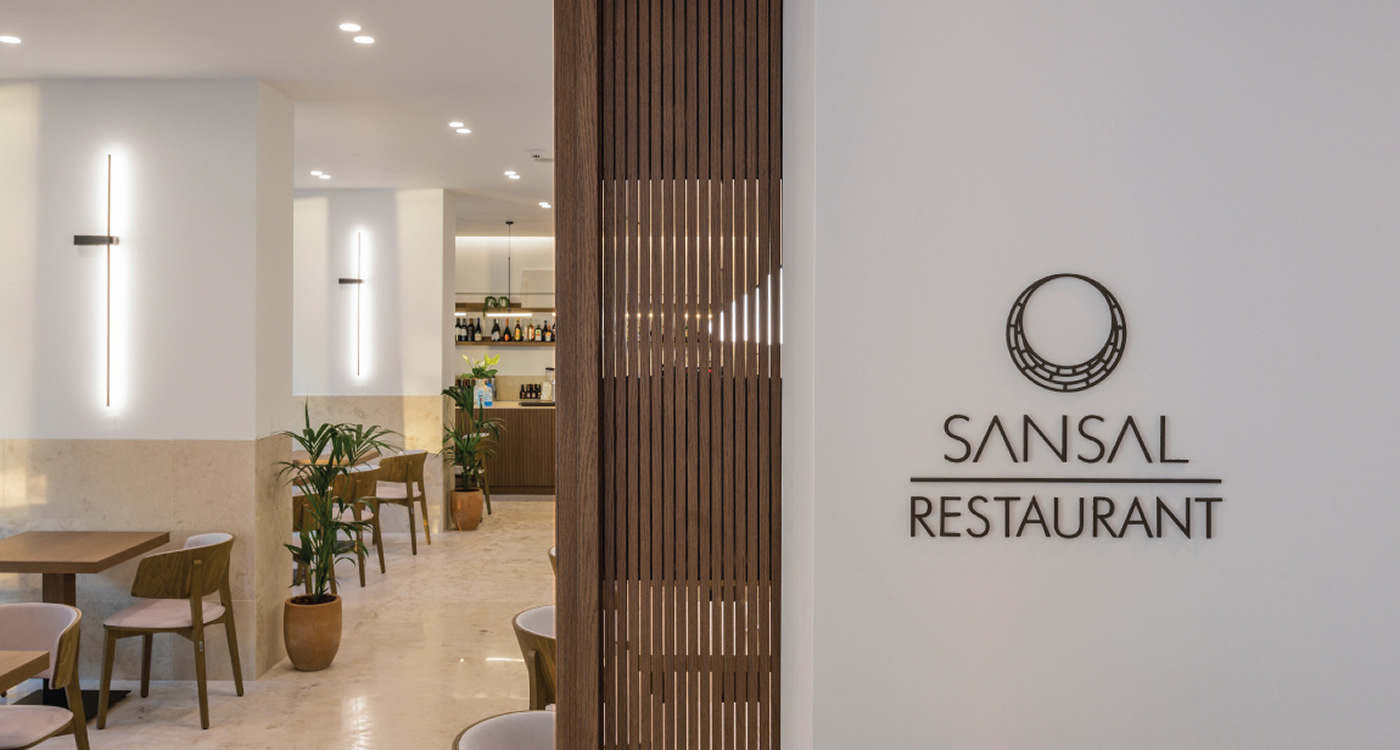| ||
| ||
|
FOOD & BEVERAGE RESTAURANT: 07:00am-10:30am Buffet Breakfast Local delicacies such as various types of cheese, vegetables & fruits, pies of local recipes and delicious pastry along with several options in lactose free, gluten free goods created to accommodate all kinds of needs & tastes. Various kinds of coffees, freshly made juices, milk & teas. 10:30am-22:00pm Light snacks, many kinds of salads and sandwiches, burgers, French fries, cold cheese platters to accompany our local wines. Various fusion plates of tapas “meze” that combine Mediterranean tastes with the famous Cretan cuisine. BAR: 10:30am-00:00am Many kinds of coffee, freshly made juices, refreshments, large wine collection, cocktails inspired by local spirits and all kinds of alcoholic beverages. CONCIERGE INFO & ACTIVITIES Falassarna Beach (45min drive)has won prizes for being the most beautiful beach in Crete and is always one of the top ten beaches Elafonissi beach (90min drive) is one of the prettiest beaches in the west coast of Crete. Balos Lagoon is one of the best beaches all over Greece. White-pinkish sand created by broken seashells. You may also swim out of MUSEUMS Archeological Museum- Housed in the earlier Venetian monastery of St. Francis, the building itself is as interesting and inspiring as the artifacts that are on display. Curated with sensitivity and thoughtfulness, the museum reflects the many layers of Chania's beautiful and emotional past. Byzantine & Post Byzantine Collection- Albeit small, the collection of artifacts on display are curiously intriguing. The restoration of the old church of San Salvatore is impressive and reflects several architectural features from the Venetian and Ottoman periods. The Maritime Museum of Crete- Displays of model ships dating back to the Bronze Age, naval instruments, photographs and paintings illustrate the vast naval history of our harbour town, including a look at The Battle of Crete. Located in the Firkas Fortress, the museum offers wonderful views, as well as being a historic building. Nautical Museum- For the 2004 Olympics, an authentic replica of a Minoan ship was constructed and sailed from our harbour to Athens. This ship is proudly on display in the renovated Akti Enoseosos, old shipyards, at the eastern end of the harbour.
Historical Archives- While focusing on the Cretan struggle against the Turks, the archives also contain exhibits on the German occupation and a small folklore collection.
Typography Museum- Houses a number of preserved print works, such as newspapers and rare Cretan book, but also displays an incredible collection of antique printing presses, including a working Gutenberg press. War Museum- For those interested in WW2 and the earlier struggles against Turkish occupation, this museum offers a good first step towards walking down the historical paths of political struggle. Folk art and Folklore Museum- Part of the complex that made up the Venetian Catholic church of St. Francis, this quaint museum contains a lovely collection of antique household items and beautiful examples of Cretan textile work, including woven rugs, finger lace and embroidery.
Please be so kind and ask our team for more details and operating hours of the museums. ART SPACES & GALLERIES Center for Mediterranean Architecture (CAM)- This renovated arsenali (dry dock) has rotating exhibits year-round.
Janissaries Mosque (aka Mosque of Kioutsouk Hasan)- During the Ottoman occupation it was one of the larger mosques of Chania and is now used as a municipal art exhibition hall.
RELIGIOUS SIGHTS In town The Church of the Three Martyrs is the main cathedral of Chania, dating from 1857. Open daily. The Catholic Church of St. Francis, once part of the complex that was the largest of the 23 churches that the Venetians built in Chania, the building dates from the 16th century and is still an active Catholic church. Open daily.
Etz Hayyim Synagogue was listed in 1996 as one of the 100 most endangered sites in the world, by the World Monuments fund. The original structure dates back to the late 15th century, and has been fully restored as an active Synagogue. Open M-F 10am-6pm.
The Church of St. Rocco has recently undergone a renovation as part of the re-gentrification of the Splanzia Square area and dates from 1630. The Church of St. Nicholas is at the East end of Splanzia square. The remains of the original Dominican Monastery date from 1320, and the present day Orthodox church has a large minaret on its right hand side, reflecting its role as a dervish mosque during the Ottoman era.
Venetian Church of St. Irini, having been walled in and hidden for decades, this Venetian neighborhood church was rediscovered in the 1980's. It is located opposite “The Well of the Turk” taverna, in the neighborhood of Splanzia.
On the Akrotiri (peninsula) Agia Triada is a 17thcentury monastery, producing very fine quality wine and olive oil. 30 min. drive.
Gouvernetto dates back to the 11th century ,but is mainly a 16th century complex. It is famous for being one of locations in the film “Zorba the Greek”, and is only 4km from Ag. Triada. 35 min. drive.
Katholiki was founded in the 11th century and is a 30 min. hike to and from Gouvernetto. The ruins are in very good condition, but be advised that the walk is not a simple stroll. Venizelos Graves are located at the highest point overlooking the city. The view is wonderful, especially at sunset and the best chocolate cake is only steps away. 20 min. drive.
W/SW Moni Gonias was built between 1618 and 1634. At the foot of the Rodopou peninsula just past the fishing village of Kolymbari, it is a mere 20 km drive west from Chania.
*Moni Chrysoskalitissas means “The Monastery of the Golden Step”. Some say that the top step is gold, but can only be seen by the pure of heart, so if you don't want to know...don't look. Only 5 km from Elafonisi, it makes for a nice break from the beach. 90 min. drive.
Cave of Agia Sofia (The wisdom of God) is located just past the village of Topolia on the road to Elafonisi. This is a very impressive cave and offers a wonderful view of the Topolia Gorge to those that are willing to climb the many steps up to the top. 45+ min. drive.
E/SE Moni Arkadi is a 16th century monastery of Venetian origin, 23 km southeast of Rethymnon. It became famous when hundreds of local peasants chose to martyr themselves there, in 1866, rather than surrender to the Turks. 60 min. + drive.
Moni Preveli- With a splendid view of the Libyan sea and the southern coastline, this pristinely maintained monastery has an impressive museum with an excellent collection of icons dating back to the 17th century. Definitely worth the drive, and coordinates well with those looking to visit Sfakia and the more rural areas. 2.5 hour + drive.
ARCHEOLOGICAL & ARCHITECTURAL SIGHTS & NEIGHBORHOODS
In Town Ancient Kydonias (at the junction of Kanevarou and Kandanoleon streets) excavation began in the early 1960's and the work continues to this day. Having been remodeled by a succession of occupiers, it was this area that suffered the most during the bombings of WWII. Kastelli Hill is the area above Kanevaro Street, and bore the brunt of the 1941 bombing attack. The remains of the Venetian Rector's Palace are located up Lithinon Street, but the age of the walls may date back to the Byzantines. *The Lighthouse at the entrance to Chania's harbour reflects our multicultural past. The base is Venetian and once bore the emblem of Venice- the Lion of St. Mark. The current tower was built between 1824 and 1832 by Egyptian troops who were part of the Ottoman Empire. The 1.5km walk around the sea wall is well worth it for a splendid view of the city and the White Mountains.
Splanzia is the old Turkish quarter, a maze of narrow streets where you will find lovely restored homes, delightful architecture and quaint restaurants and bars. This area is not as touristic as the harbor and is still very residential. Have a drink in the neighborhood while resting at a small cafe. San Schiavo Bastion is part of the defense system that was started in 1538. For some wonderful views of the town, simply walk up the ramp at the street side of the bastion.
Turkish Minarets, (2), are left from the Ottoman occupation. One can be found on Daliani St. behind the Agora, while the other is off of Daskalogianni next to the church of Agios Nicholas.
The Agora (covered marketplace) was built in 1913 on the infill of the moat that surrounded city, where the main entrance to the walled city once stood. Inside you will find a very active market, stalls with fish, meat, cheeses, herbs, and honey are nestled together alongside some cafe's, taverns and tourist shops. Open M/T/W/TH/FR/S 9.00 am-14.00pm. Afternoons on T/TH/FR 18.00pm-21.00pm. Closed Sundays.
*The Public gardens are located in modern Chania, only a 10 minute walk away. Shady and cool, this park is a lovely spot for children. A small zoo and a relaxing cafe add to the charm.
*Koum Kapi means beach in Turkish. Frequented by many of Chania's younger set, this seaside area sports cafe bars and tavernas and is wonderful for a long walk and people watching.
*Tabakaria was once the leather tanning and tobacco drying area of Chania. Part of its charm is the rustic backdrop of old warehouses that run along the seaside. One can walk the entire distance from the hotel along the sea in around 30 minutes.
West Polyrrinia was a fortification located West of Chania, just South of Kolymbari. 45 min. drive, and an uphill hike.
Diktynna was an ancient temple out at the tip of the Rodopou peninsula and is not clearly marked. The 2-hour drive poses and adventure, a 4x4 vehicle is recommended.
East Aptera is still an active excavation site. With its privileged location high above Souda bay, one can enjoy the views and see the remains of Minoan, Roman and Turkish occupiers. 30 min. drive.
Palace of Knossos is one of the main archeological attractions in Greece. Enjoy the ancient palace of King Minos, the myth of the Minotaur and the start of 5,000 years of civilization. Plan on two hours to fully see this ancient site located outside of Iraklion. 2 hr. drive. Palace of Phaestos is located to the East, on the South coast of the island. Thought to have been inhabited since 4000 B.C., it is considered to be a better archeological site by many purists to that of Knossos. 3 hr.+ drive.
Gortyna has been inhabited since neolithic times, growing through Archaic and Classical periods, serving as the capital during the Roman occupation and a Christian center later on. The Byzantine Basilica of St. Titus, several statues and temples have all been uncovered. In mythology this is the area where Zeus and Europa were said to have mated. Located South of Iraklion, on the way to Phaestos. 3 hr.+ drive. Palace of Malia is the third largest of the ancient palaces on Crete. Destroyed by the same earthquake that destroyed Knossos and Phaestos, the palace was rebuilt in the late bronze age. Most of the ruins that are visible date from this period. It is located East of Iraklion on the North coast of the island. 3 hr. + drive.
VILLAGES Therisos, the village where Eleftherios Venizelos (Crete's and later Greece's first prime minister) began his fight for Cretan independence, boasts numerous tavernas known for their grilled meats, particularly lamb chops. A quaint historical museum and beautiful church are some of the things to see on a walk through the village. Only a 30 min. drive through a scenic gorge lined with chestnut trees.
Vouves is the home of the oldest olive tree, believed to be 3,000-5,000 years old and the Olive Tree Museum. The museum artistically combines antique olive cultivating and pressing implements with modern art. This is a perfect stop to combine with other points of interest to the west. 30 min. drive Gavalohori is in the heart of the Apokoronas area and has retained its authentic feel and architecture. A small folk art museum and a women's coop of textiles are two things to visit, along with seeing the lovely churches and a glimpse at quaint village life. 30 min. drive. Vamos spots lovely views, excellent tavernas and lovingly restored buildings. Combined with other points to the east, it makes for a good spot to stop for a stroll and a bite to eat. 30 min. drive Samaria Gorge is 15 km (9 miles) from beginning to end, meaning the village of Ag. Roumeli. Judged to be high in difficulty, as it is so long. The starts off downhill and is well maintained, then goes flat along the rocky river bed which is much more unstable. Organized excursions are available and highly recommended, as well as “the lazy way” route. Simply ask our concierge or reception staff for help in booking a tour for you.
Ag. Irini Gorge is a 7km (4 mile) hike, that is not crowded nor as difficult. The gorge is located 20km north of Sougia and is a favorite amongst avid hikers and locals. 1+hour drive away.
Aradena Gorge is on the south coast just west of Choras Sfakion and runs to the coast. It is possible to hike down into the gorge and then up the other side, but someone needs to drive the car over. Like wise, it is possible to hike the gorge to the coast, to Loutro, but again, there is the problem with car. This is a gorge that one can hike a small portion of, or else you need some planning. 7km (4 miles) and of medium to difficult hiking. Allow 2+ hours to drive there.
Imbros Gorge is on the road to Choras Sfakion. You will see signs for the gorge, and can easily park your car and hike the gorge either in its entirety, taking a cab back to your car at the other end, or you may hike a portion in and then back. The entire gorge is 8 km (5 miles) and is of medium difficulty. Allow 1.5 hours to drive there.
Gouvernetto has a lovely hike down hill with an stunning view to the sea. Just 15 min. down you will find the cave of St. John the Hermit. The remains of the monastery, Katholiki are another 15 minutes further down. From here, you can descend into the gorge and follow it out to the sea, but it is rough going. From Katholiki back up to the top will take you a good 45 min. The path is not in good condition throughout the hike so be aware of your footing.
Topolia Gorge & the Cave of Ag. Sofia are lovely as a stop on the way to Elafonisi. The gorge can be seen from the road side at several stops, but for a breathtaking view of the area climb the steps up to the cave. The cave itself is massive, and contains evidence of settlement dating back to the Neolithic Age. Additional things to do The Botanical Park of Crete is a lovely stop on the road to Omalos and the top of the Samaria Gorge. Well maintained paths wind their way through a lush collection of plants from around the world. Both walking sticks and sun umbrellas are offered for your convenience. An excellent taverna with spectacular views specializes in traditional foods and cooking methods. Combine this stop with other mountain excursions like Therisos village, or the top of the Samaria Gorge. 17 km from Chania.
Biolea, Organic Olive Press, is well known for both their products and their commitment to ecotourism and the environment, is one of Chania's hidden gems. Free tours are by appointment and include a tour through the factory, along with information on different pressing methods, the benefits of olive oil, an informative video presentation and a guided tasting of the different estate olive oils. This is a great choice in combination with other points to the west, 35 min. drive
Dourakis Winery offers tours and wine-tasting in the lovely setting of Alikambos. Learn about this ancient art and enjoy the fruits of the land. Perfect to combine with a trip to Rethymnon or the Apokoronas area, the winery is located on the way to Sfakia. By Appointment only, 35 min. drive. Manousakis Winery and Vineyard is the home of Nostos Wines. Located 15 km from Chania in the village of Vatolakkos, the winery offers tours and tastings by appointment only.
Milia is a wonderfully restored stone village that is now an eco resort, in the mountains on the way to Elafonisi. Enchanting hiking paths surround this remote spot, and traditional taverna serves up locally grown, organic, Cretan delicacies. A favorite amongst locals, it is worth the harrowing drive for a light hike and unforgettable meal. Allow 1.5+ hrs. drive
Manousos Chalkiadakis Ceramics offers you a day of art exploration. Tutored by internationally know ceramicist, Manousos Chalkiadakis, find the artist within you. Located at his stunning studio/ home, in the picturesque village of Paidochori in Apokoronas, only 40+ min. from Chania.
The Blown Glass Studio at Kokinochorio offers viewings of the glass blowers in action. Traditionally made, and all from recycled glass, this is a lovely stop while touring the Apokoronas area. A tempting gift shop might provide you with some souvenirs. 40+ min. drive. | ||
Suites
| ||
| 
| |
| ||
| ||
| ||
| ||
| 
| |
| ||

| ||
| ||
| 
| |
|
| ||
| ||
| ||
Rooms
| ||
| 
| |
|
| ||
|
| ||
| 
| |
|
| ||
|
Facilities
| ||
|
| ||
|
| ||
|
| ||
|
| ||
|
| ||
|
| ||
|
| ||
|
SanSal Boutique Hotel **** Akti Kanari & M. Metaxaki str. 73 100, Chania, Crete, Greece Tel: +30 28210 70755 Website: www.sansal.gr Email: info@sansal.gr
Contact person: Mr. Panos Markou General manager Mob: +30 6987 294247 Email:gm@sansal.gr
Facebook: @sansalboutiquehotel Instagram: @sansalboutiquehotel
| ||
